Introduction
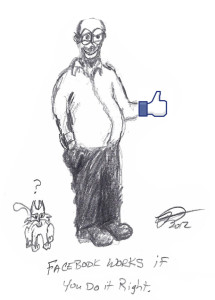 I see lots of conversations on writers’ websites and forums about whether or not Facebook is a good place for writers to connect with readers. Many writers just ask if it’s any good for “marketing” or “generating sales.” There are many opinions on that, and many reasons why there are many opinions, which could be an article all by itself, so I won’t go into that. I’ll just say that I am an advocate for writers using Facebook.
I see lots of conversations on writers’ websites and forums about whether or not Facebook is a good place for writers to connect with readers. Many writers just ask if it’s any good for “marketing” or “generating sales.” There are many opinions on that, and many reasons why there are many opinions, which could be an article all by itself, so I won’t go into that. I’ll just say that I am an advocate for writers using Facebook.
Authors who approach their page as a way to connect with readers will do better than people who think of it solely as a means of getting book sales. This is something I’ve seen said a zillion times before, and yet people still struggle with making Facebook work. I think the reason for that is that in most articles I’ve read, most videos and webinars I’ve watched, that idea is tossed out as either a given or as a obligatory thing they say right before heading into their list of the “Hot Five New Facebook Techniques to Make You Rich.”
So while I will be putting up a few things you can do to help yourself grow your writing business, most of this is going to be about philosophy and approach. It’s the mental game, at least up front. Without really, really understanding how Facebook can help you connect, and how to work it as a connection tool rather than a selling tool, you won’t do either.
Beyond that, I don’t pretend to be the all-knowing expert of Facebook. I’m not. I’ve just been using it for a few years now as a professional marketer and as a professional writer and have learned some things. I credit it with helping me launch my first book onto the bestseller lists on Amazon, and I credit it with helping make a great launch of my second one too. So while I don’t have any magic bullet answers, and while I learn new stuff almost every day about how Facebook works, I do have my experience so far which may be useful to a few people who are newer than me, or even who have been at this longer and can’t get any traction on Facebook. I am happy to share what I have seen, read, tried, done well, done horribly, and then you as a writer or musician or really anything else can do with this information what you will.
I’m going to start by breaking this article down into some core parts. I could just write separate posts for all of them, but when I was getting started putting out my first book, I found all these great blogs that had lots of helpful tips, but they broke everything out into different posts, cross-linked everywhere, and I could never find the different pieces again when I tried to go back and figure out which links from the first post led me to this article about Goodreads or that article about formatting for Nook or whatever. So I’m sticking it all in this one, or at least all the core of it, in case anyone wants to try to make this work. If you find yourself finding this post useful but becoming overwhelmed a little with the detail, bookmark it in your browser and come back. I’m really not expecting anyone to memorize all of this in one sitting, but I really am trying to help.
Below are the seven core concepts I’m going to cover. The “sales funnel” is the center of it all, but to make it work the first three parts have to be understood. The last three parts are how to make it work in a more hands-on way. But all are essential. Without a strong grasp of each of these, I think writers are always going to struggle to get what they are hoping for from their Facebook pages, which is ultimately book sales. Here they are:
- Expectations
- Qualified Prospects
- Website & Mailing List
- The Sales Funnel
- Content Creation
- Paid Ads
- Reports and Tweaking
So there you have them. I won’t waste any more time with preambles, as this is going to be a long bit of reading for the few who care to dig into it as it is. Here we go.
Expectations
 I’ll begin with this one, because without the right expectations going in, you are going to hate your Facebook experience. It’s not going to do what you want, or it won’t do it fast enough, and you’ll be unhappy and say it sucks. So before you even bother with a page, or bother going back and messing with that page you started but gave up on, you need recognize that success requires both long and short term goals. And the goals can’t just be: Sell books NOW, and Sell more books LATER.
I’ll begin with this one, because without the right expectations going in, you are going to hate your Facebook experience. It’s not going to do what you want, or it won’t do it fast enough, and you’ll be unhappy and say it sucks. So before you even bother with a page, or bother going back and messing with that page you started but gave up on, you need recognize that success requires both long and short term goals. And the goals can’t just be: Sell books NOW, and Sell more books LATER.
If you are just starting your page out, your short term goals need to be about audience building. You might get some sales too, but at first you need to build an audience.
The desire to “sell books!” is the biggest wrong expectation writers have when they start their page.
I think it is the main reason why writers making pages for the purpose of marketing fail—and yes, I know that seems ironic or something. But if you start your approach to networking (Facebook is a social NETWORK in case you didn’t know) from the position of selling stuff, it’s going to fail. You have to think of Facebook as a cocktail party. It’s a hangout. And if you show up and just start walking around handing out your business cards telling everyone to come buy your crap, everyone will hate you, or at least they will blow you off as an annoying sales douche and ignore everything you say. This is the number one mistake people make with their pages. I see it literally all the time. Up goes the page, out come the links to books. Over and over and over and over. Bleh.
Think about it, if you are a new indie author, a no-name, why in the hell would anyone want to buy your book just because you have a page or an ad on Facebook? Besides the fact that people don’t log into Facebook to buy books, there are nine zillion other books out there anyway, and two zillion of those are from authors everyone has heard of before. Nobody cares about your book. At least not yet.
So, if you only want to sell books right away, from the beginning, starting a Facebook page is a terrible idea. I suggest you stop reading now because what I’m going to tell you isn’t going to help. Snake oil is on aisle nine.
If you’re still here, then the trick is to go in with the right expectations, with a short term plan for building an audience, and a long term goal of engagement with readers. Understand Facebook is a COMMUNICATION platform, a network. It allows you to engage with people. Yes, you would like for people to buy your book, duh: you have bills to pay, I get it, but first you have to give them a reason to buy from you. This is the ethos that old, dead guys like Aristotle talked about, one of the three legs of that ethos, pathos and logos thing we’ve all heard about. Facebook gives you a way to do that, develop ethos, which in marketing parlance translates to the heart of your brand. And yes, as a writer, you are building a brand.
When people trust your brand, they will buy from you.
Qualified Prospects
This could have been part of the section above because it is all about the audience you are trying to build. However, this particular thing is so important, I am separating it out. And while I’m playing a little fast and loose with how I define it for purposes of this article, it is the most vital bit of marketing jargon you need to understand to get the rest of this, and, given what you just read, it may seem contradictory in that it is a “selling” term, but, well, you need to get this.
If you don’t get this concept straight in your head, your marketing is never going to “work.” Ever. Not on Facebook and not anywhere else.
Qualified prospects are the “prospective” customers you want. All the rest are worthless to you. You need to be picky. You must be picky, or you will waste your time and money. Facebook helps you be picky.
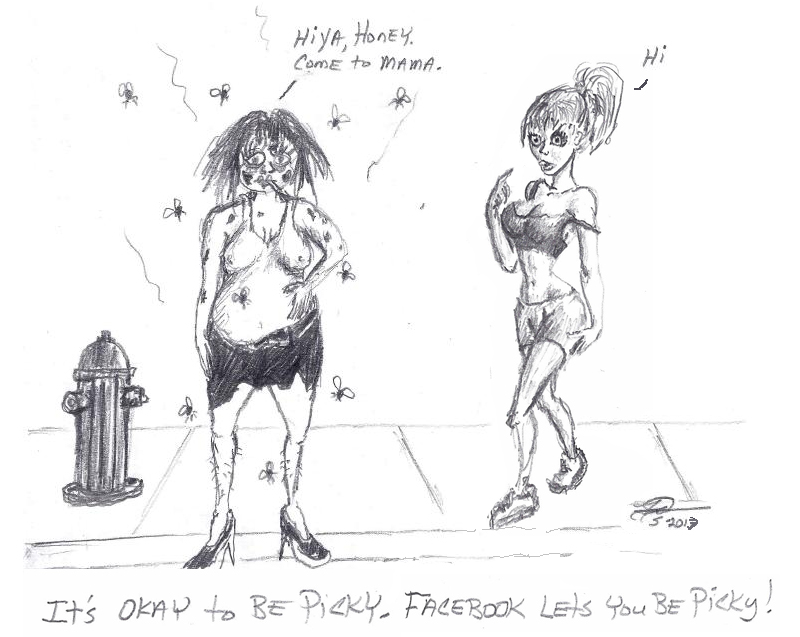
A qualified prospect begins by being a person who is actually and deeply interested in what you do (that’s the “qualified” part of the phrase). They are fans of the genre, of romance or fantasy or science fiction or poetry or whatever it is you write. Completely outside of you, they just like that stuff already. The more tightly focused they are on loving specifically what you do, the better.
As an example, Amazon “fantasy” book lists have vampire-romance books lumped together with dragons and wizards stuff. On the same list. As if they were both essentially the same. And while some people may think those are pretty much the same, people who love either one know they are not even remotely the same. Yet, all those readers count as “fantasy” readers to Amazon right now (I bet they fix it eventually). So, if you write about hot vampire dudes with chiseled abs destroying damsels in distress, you DON’T want a person to like your Facebook page who only likes stories about prim and proper armored knights slaying dragons to save the damsel in distress’ chastity. A person who only likes tales of chaste damsels and noble knights is NOT a qualified prospect for your lusting, sweaty vampire romps. The same goes for the other way around.
You seriously do not want people to like your page if they don’t genuinely love the kind of stuff you write.
Contrary to popular belief, you do NOT want the highest count of fans for your book’s Facebook page that you can possibly get as fast as you can possibly get them no matter what. Why? Because you do NOT want people who aren’t qualified prospects.
Trying to get as many likes as you can, regardless of who they are and what they actually are interested in, is what I call getting “vanity fans.” Vanity fans will cost you a TON of marketing money. I’ll explain it more later, but it’s because some of the stuff we’ll talk about below includes paid advertising in which the cost of the promotion is related to how many fans are on your page. Why would you want to pay money to have someone who hates sexy vampire stories see your ad? Why pay to show someone who thinks dragons are for nerds your awesome dragon story ad? If you just want to throw marketing money away, give it to me. I’ll go yell out my window for people to buy your books before I cash your check. It won’t be any less useful for you in terms of marketing, and I like money. We all win. Well, mostly me. But whatever.
So anyway, the whole point about getting qualified prospects is that they really are people who have the highest probability buying your books, they are the best “prospective” customers (hence the “prospects” part of “qualified prospects), and that is where you want to start. When you start your page, your first mission is to find these qualified prospects, the most attractive ones, and engage with them, build your ethos as you entertain and interact with them.
Website & Mailing List
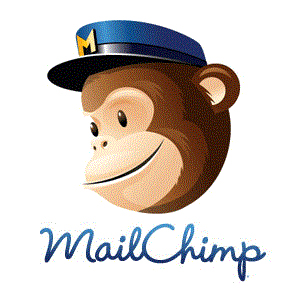 A website and a mailing list are two sides of the same coin in my opinion, so I am lumping them together. Both are, again in my opinion, essential for an author to really get the most out of Facebook marketing. Even more accurately, Facebook is a great way to help you get the most out of your website and mailing list. Now, I’ll admit, they are not necessary in the strict definition of the word, and you can operate a Facebook page simply on its own while using much of what I’m going to talk about below. However, I think not having these things makes your author or book fan page far less rewarding that it could be in terms of your business. Frankly, I think you run a considerable risk in that regard by doing only a Facebook page. Not having them is both too trusting of Facebook and short sighted.
A website and a mailing list are two sides of the same coin in my opinion, so I am lumping them together. Both are, again in my opinion, essential for an author to really get the most out of Facebook marketing. Even more accurately, Facebook is a great way to help you get the most out of your website and mailing list. Now, I’ll admit, they are not necessary in the strict definition of the word, and you can operate a Facebook page simply on its own while using much of what I’m going to talk about below. However, I think not having these things makes your author or book fan page far less rewarding that it could be in terms of your business. Frankly, I think you run a considerable risk in that regard by doing only a Facebook page. Not having them is both too trusting of Facebook and short sighted.
Do you remember a thing called My Space? Yes, I thought you might. It’s dead. It has been dead for a long time. But it used to be all the rage until Facebook came along and choked it out into nothingness. If you don’t remember My Space, well, that proves my point even more.
You should have a website. You probably already know that if you are taking your writing career very seriously, so I’m not going to go into the many super, super easy ways to do this, but I am just going to say it is easy. And if easy is still too hard for you, you can get them done cheaply at places like 1&1.com and any number of others just like it for chump change. It’s like ten bucks a month, plus another ten per year for your domain. Seriously, just commit. If you really can’t figure it out, email me and I’ll help you get going (or I’ll write another blog about it if for some reason I get inundated, which I doubt is a real danger, but you never know). You don’t need the greatest website in the universe. You just need a professional looking place to put up your writer’s shingle. Here’s why:
If (when) Facebook goes under, or if everyone just shifts to something else—Google +, resurrected My Space 2, or whatever comes along next—what are you going to do with all those people you have been engaging and interacting with all along while you were building up your page using all this stuff you are going to learn? All those highly qualified prospects—and after doing it for a while, all those people who have read your books, found your page, and are genuine, full-fledged fans of yours—what are you going to do when they are all gone off to the next big social media thing? Are you going to start all over on that site, on that new thing? (Yes, probably, but that’s not the point.) And what if they just stop using social media? What if they get tired of the spam and privacy violations as corporate techno-greed gets worse and worse in coming years, more in-your-face salesy garbage as big money comes in and makes Facebook a crappier and crappier experience for the user? What then?
By not having a website that is YOURS, you have no way to control your own destiny. You put all that time and effort and even some money into your Facebook page, but all those Facebook eggs are in one basket. A Facebook page for your books or your author name or your pen names, whatever, is only good as long as Facebook is in use, is popular. Granted, that’s likely to be for some time to come, which is why you should be using it, but who knows how long that will be? My Space went down pretty fast. If you don’t have your own website, then you are leaving yourself vulnerable to whatever happens in a year or five or nine.
EDGERANK
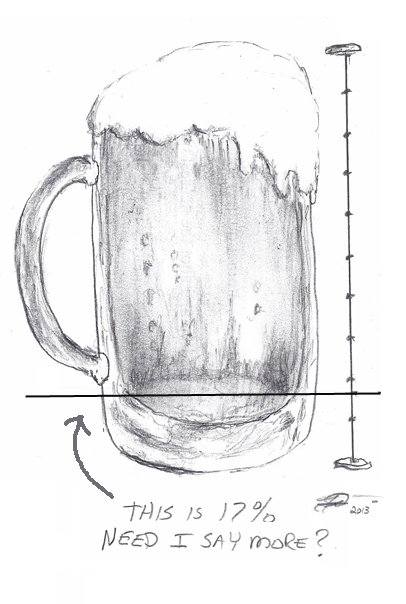 In addition to that, Facebook has this thing called “Edgerank.” Edgerank is this fancy algorithm that they use to figure out how many people who like your page actually see any given post you put up. What many writers (and other people) who have Facebook pages don’t understand is that not all your page fans see every post you make. In fact, the average is between 12% and 17%. So if we go on the high-end of average and you have 1000 fans on your page, and you make a post announcing that your new book is coming out tomorrow, 170 people are going to see that post. There are ways to make that better, which I will cover in the Content and Paid Advertising sections below, but for the standard run of the mill post, even if it’s just a picture of your cat sleeping on your keyboard, you get about 17% . (Hey, that beer drawing came out pretty good! BRB)
In addition to that, Facebook has this thing called “Edgerank.” Edgerank is this fancy algorithm that they use to figure out how many people who like your page actually see any given post you put up. What many writers (and other people) who have Facebook pages don’t understand is that not all your page fans see every post you make. In fact, the average is between 12% and 17%. So if we go on the high-end of average and you have 1000 fans on your page, and you make a post announcing that your new book is coming out tomorrow, 170 people are going to see that post. There are ways to make that better, which I will cover in the Content and Paid Advertising sections below, but for the standard run of the mill post, even if it’s just a picture of your cat sleeping on your keyboard, you get about 17% . (Hey, that beer drawing came out pretty good! BRB)
So here’s why that matters and why I include the mailing list as an essential item: while 17%, 170 in that 1000, finding out about your book and maybe buying it is better than nothing, 100% would be even better still. Heck, even just 50% or 60% would be better than 17% don’t you think? And one of the best ways to move your marketing needle in that direction is to have people on your mailing list … the one that you use as a big part of your website. The one that you own, the one that is not part of Facebook, Barnes & Noble <cough>, Amazon or any other company that may or may not be in business down the road.
If you have a great mailing list built up and Facebook goes under, or your fans all get tired of Facebook’s super aggressive in your face commercialism and decide to move on, guess what, you can still contact your fans through your mailing list. That is vital to any business. Your mailing list is gold. If you are only on Facebook and it folds, you have no control over that customer information at all. All your work will just be gone, and you have no way of knowing who your customers are or how to reach them.
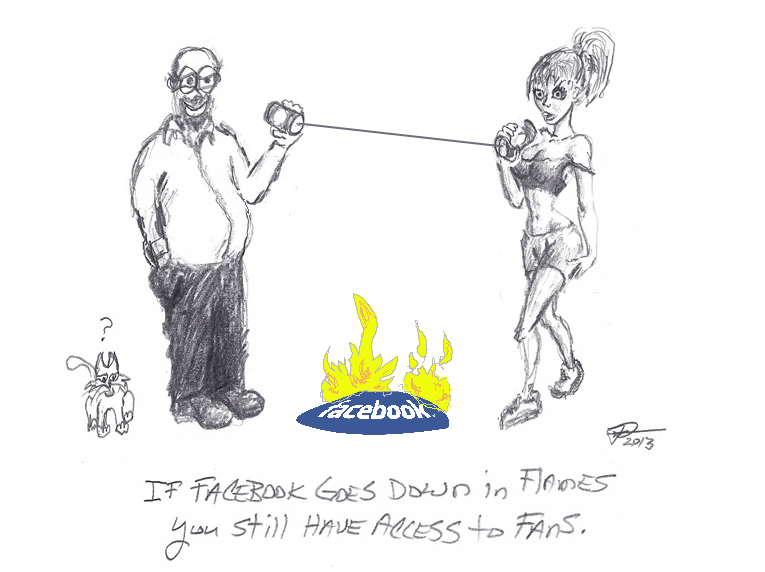
And, on top of all of that, not all your prospective readers are on Facebook to begin with. Some people don’t use it, never have used it, and never will. Lots of people look for stuff to read on Google and other search engines—they look for reviews or conversations about books through search—which will pay off on your website and your Facebook. So, if you only use Facebook, you don’t really get to reach all those other people. I admit, this last point is a bit of a digression, so I’ll leave it there. Get your website up, and get a mailing list going through someone like MailChimp (that’s who I use) or Constant Contact or any of the other reputable ones out there. There are plenty, and most are like MailChimp, where they offer a FREE account for people with under so many names on the list. It was 2,000 last I looked on MailChimp. By the time you have more than that, you’ll be happy to pay for the service, so it’s a great system.
The Sales Funnel
Now that we have our expectations in check, know who we are going for (qualified prospects) and understand the essential nature of a website and a mailing list for all of this, this section will bring all that together into something that hopefully starts to look like a strategy for you.
The sales funnel is the core of the whole marketing/selling strategy. It’s the skeleton, the framework, the … the some other really important metaphorical object that holds stuff together in a vital way. And yes, this is about sales, at least in the end, so those of you who are just jonesing to get to the part about how you sell books, well, here’s a little something to take the edge off the anxiety of having read this far. Meet “the funnel.”
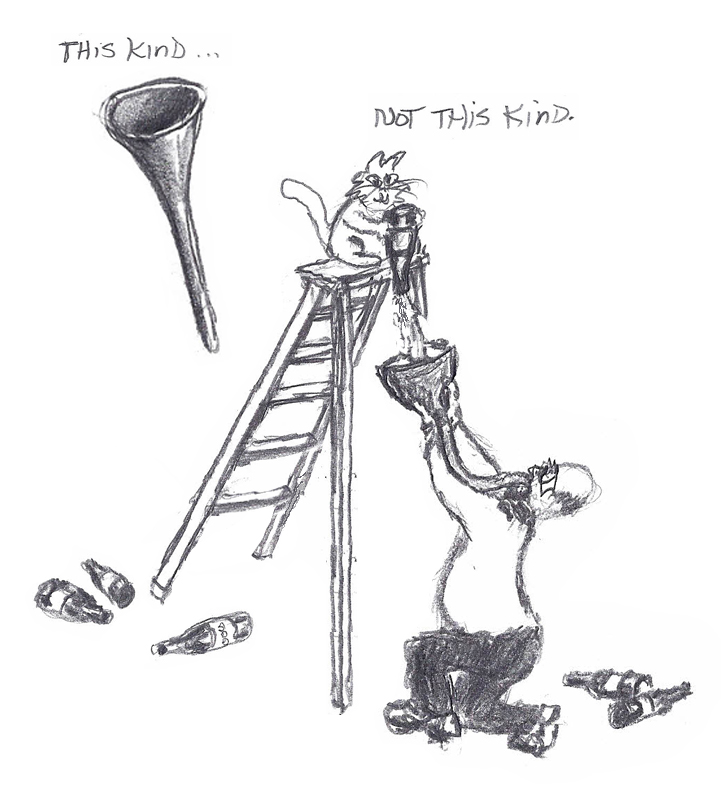
Selling books is like selling anything else. There is a path to purchasing that we all take as consumers of anything. It looks something like this:
1. Discovery – we hear about something
2. Evaluation – we decide if we have an interest in it
3. Comparisons – we investigate and/or make comparisons
4. Price – we decide if we can afford it
5. Decision – we decide to buy or not to buy
When you first put out your book, it became one of the nine zillion other books. Additionally, there are hundreds of zillions of potential readers out there. So given this long process and the buying reality it describes, how can you possibly compete and find readers on a basis beyond anything other than blind-ass luck?
The sales funnel, that’s how. You have to move your qualified prospects through a thing called the sales funnel.

The sales funnel is a metaphorical object that represents the flow of consumers from that first step on the list, the stage of “discovery” where lots and lots of people first learn about a product or service, and then move on down through the rest of the steps on the list until they decide to buy or not. The numbers of people get smaller as each step passes: you gather a bunch with your initial advertising campaign and then those numbers taper off, losing more and more through the “path to purchase” process, as if they were literally passing through a funnel and being squeezed down, until you get whatever number is left that drop out through the narrow end. Those are your customers.
The wide part of the funnel begins when you run an ad on Facebook, maybe another one on Goodreads, and/or you do a book reading at your local bookstore where you hand out 100 bookmarks with your website and Facebook URL on it. You send out an email to your mailing list. You do a bunch of stuff, essentially screaming as loud as you can out into the world: HAY, I HAVE A BOOK OUT, YO. COME SEE.
Let’s say the total number of people who see one or some of that advertising is 100,000 combined. That’s a lot, sounds great! But, sadly, they aren’t all going to buy. The only thing that has happened right now is that they saw your ad. They haven’t done anything yet. All they are so far is standing on the first step on the list up there, #1, discovery. They have discovered there is a book. It is new. And it is yours. That’s it.
Having a bunch of people see your ad isn’t the same as having anyone buy a book, and yet this is the step where most writers stop marketing.
I see soooo many people buy an ad and then blink bewildered into their spreadsheets, astonished that they aren’t selling anything despite how awesome the ad was, how cool that website is, or how much they paid.
It makes me cry a little, because I actually do want to see people succeed, especially all these indie writers who have to do all their own marketing.
Fortunately, this is where Facebook becomes a beautiful thing.
Just because those people haven’t bought based on seeing that ad doesn’t mean you should let them move on and forget about you.
People who see your ad but don’t buy are not “failed ad viewers” or “mean people who don’t get what your book is about.” They’re just still up at the top of the sales funnel is all.
Your Facebook page is, especially when you are just starting out, the wide part of the funnel, like a physical thing that holds all of those people in it, and it allows a place for step 2 to happen. It’s a place to gather up potential readers, to “capture” them to use a marketing term. Without a Facebook page, you have no physical place to “hold” them after you run an ad, no top of the funnel. Facebook is the mouth of your funnel, or at least one mouth, and it’s a really big awesome one.
You can use Facebook paid advertising (or other sites) to bring people to your page, and when they see that the great content on there (content covered below), and that content looks like something they are interested in, they’ll “like” it. In a sense, they will look at what you have on your page and, by liking what they see, they say to you, “Hey, I’m a qualified prospect for your book, even though I’m not going to buy it right now.”
Heck, sometimes they might just click like the ad on the side of their Facebook newsfeed, the paid ad with the hot vampire guy or the awesome dragon depending how you set it up (ads also covered below). Either way, people will like it based on the ad, thus “qualifying” themselves to some degree, and from that they deposit themselves firmly in to top of your sales funnel. Now you have a chance to help make step 2 take place, and hopefully move them to step 3 and on through the sales funnel until they buy.
Now some might still wonder, “If I can get that many people to see an ad, why not send them all straight to my book’s Amazon page? They can read the description and maybe they will buy right then! Why waste time trying to do all the middle steps when my book is awesome and my blurb rocks?”
Yep, you can do that. You can send them straight on over. And you might even get some sales. You probably won’t, but you might. I have. Not a lot, but it can work. But the reason it probably won’t is because most people aren’t going to impulse buy at first sight. Seeing the ad and going to the Amazon or B&N page is still all the whole discovery thing in step 1 (remember that thing I said above about people not logging on to Facebook to buy books?). And while your Amazon or Nook or Kobo or whatever page can have information that helps with some step 2 stuff for that prospective customer, and an impulse buy can happen from there, the problem is that it’s not a controllable thing that you can count on. You are going to need lots and lots of luck. Relying on luck is horrible for marketing. It’s also expensive. You can’t rely on randomness. In the end, your percentages are going to be super low and you’re going to spend a lot of money on average trying to find something that might possibly work. Probably more than you get back. And that’s not even the worst part. Here’s the worst part:
People who go directly to your book’s sales page from your ad but DON’T buy are lost to you forever.
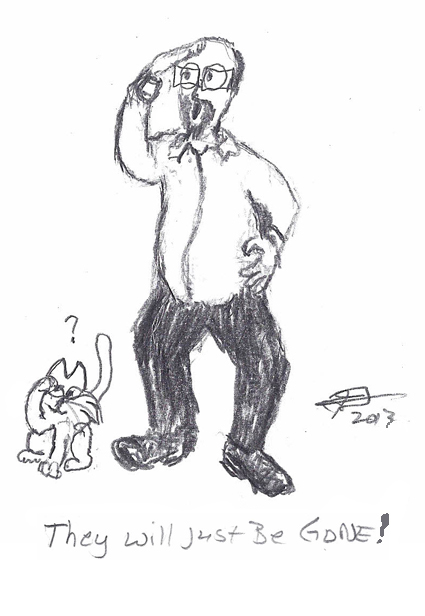
Poof, buh-bye. You paid for the click of the ad (that’s how paid advertising usually works), and yet you got nothing. Yep, nothing. Zilch. Zero. Nada. But you do get charged for the click. You can’t do anything else with it, but you do get to pay the bill. No data, no follow up, no chance to win them over somehow. Just nothing. Amazon and Barnes & Noble and Kobo and Apple have that customer data now, by the way, just not you. And no, they aren’t going to give you that person’s name and email so you can send a follow up email or coupon or whatever else. THEY will be sending their own follow ups based on what they want to sell to that customer, the one you paid to bring to their site. Granted it may be your stuff being promoted, but it’s just as likely (more likely?) that it won’t be, at least not for long. See, Amazon and B&N get to have that information forever. You just gave THEM a qualified prospect, and you have squat. You have worse than squat actually because you paid for that crap. You bought the giant companies a qualified prospect so they can advertise someone else’s books. How nice of you. Bleh. Pisses me off every time I think about it because I did my fair share of that before figuring it out.
The point is, when you buy an ad, you are putting people at step 1, discovery. But if you let them get away by sending them to someone else’s website, you are trading away the chance to put those qualified prospects in YOUR sales funnel, which you have some control over, for the hope of a lucky impulse purchase. That’s the kind of odds casinos will give you all day, every day.
Here’s a little added bonus argument for bringing people to your page: it is possible that someone will see your ad, come to your Facebook page, like it, and then be motivated to impulse purchase based on what they find there (your good content as covered below). Most of the time, they won’t, but it’s possible (especially if you use tab apps, but I’m not going to open that can of worms yet—see the Heyo links at the bottom if you are curious since that’s what they do). So you aren’t totally losing the chance for spontaneous sales by bringing people to your page. It can happen, and it does, but it’s not the norm. Let me repeat once again: people who see your ads on Facebook or other social sites are NOT shopping for books. That’s not why they logged in. They logged into their Facebook account to chat with friends and to look at cat pictures or to agree with grossly one-sided political commentary. Expecting to generate immediate sales off of Facebook is just not being logical. So run your ad, get them to your page, and add them to the top of your funnel. That is good marketing.
Another part of the sales funnel advantage of Facebook, perhaps the biggest part, is related to the mailing list.
As you build up your page, you will begin to have more and more “organic” fans of your stories coming to your page in ways not directly related to your advertising. These will be people who found your books in some other way, via friends or book lists on Amazon or B&N, etc. They will be people who read one or two of your books and decided to seek you out, real fans in the traditional sense of the word, readers who came to your page because they wanted to connect with you as a writer. Yay!
Your Facebook page allows you to communicate with these people and guide them to where you really want them, on your mailing list. And that’s not being a douchey sales person to think like that. They like you. That’s why they sought you out and found you. But they found you on Facebook, which, as we covered above, only has a 17% reach per post, which is not really all that reliable for communication. Your true fans do not want to miss your messaging. So, help them out and guide them to your mailing list where they can get 100% of your messages. Ain’t that fun? That is the end game, remember? And also remember, you don’t know how long Facebook will be around, or how long Facebook or Twitter or any of these big sites, including Amazon, will be friendly or affordable for writers who aren’t so famous yet. So, take control of this opportunity as it exists and help people find your website, and, ultimately, your mailing list. Do that, and now you are in control of your marketing, now, later and forever. You. Not Facebook, not Google, not Amazon. YOU.
And just so you can see how easy it is to get people who like your stuff and actually want to sign up for you mailing list, look: I threw this up the day I started drafting this article to show how it works. I didn’t even make a nice graphic or anything. I went totally generic just to make a point.
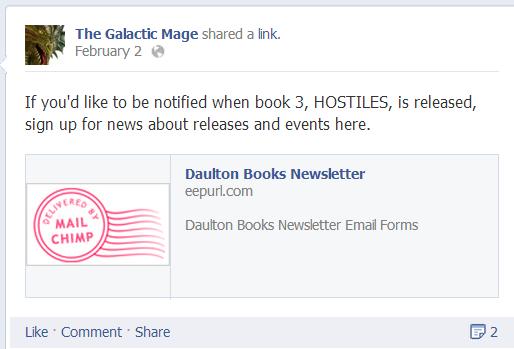
See how plain that is? But look at the sign up notices in the two and a half hours following the post.
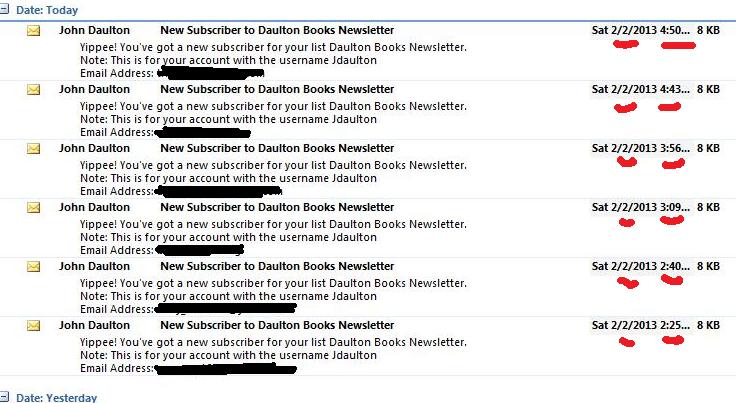
I actually got 8 sign ups in a a little over a couple of hours after the generic post (two of them were too far down for the screen shot). Cost me zip to get those 8. And, when I decided to try promoting that plain-Jane post later, I got several more. For ten bucks. I ended up with around 30 sign ups off that post in about a day and a half. But forget about the ones I paid for. Even if we ignore those for second, think about it, that’s still 8 people in two hours off an ugly post. People who actually wanted to know when I put out a new story. And now they will all get emails from me when my next book comes out. Even if Facebook goes belly up. And it will be an email they actually took time to request and went through the effort of filling out the form! How can a writer possibly get a more qualified prospect than that?
Content
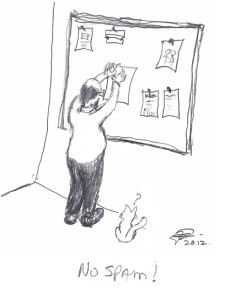 I’m not going to go into super deep detail on how to make good posts that get engagement because there are lots of advice posts about how to do good Facebook content (some advice is more douchey than others, so just remember “the golden rule” as you read and you’ll be fine). There’s no point in reinventing the wheel here, so I will link some excellent sources at the end of this, and you can pick up the basics easily from them.
I’m not going to go into super deep detail on how to make good posts that get engagement because there are lots of advice posts about how to do good Facebook content (some advice is more douchey than others, so just remember “the golden rule” as you read and you’ll be fine). There’s no point in reinventing the wheel here, so I will link some excellent sources at the end of this, and you can pick up the basics easily from them.
For what it is worth, when I say “content” I’m talking about all stuff you post. Content can be simple text-based posts; it can be pictures, pictures with text, videos, or stuff you share from other pages. All of that is content. What you put up matters, because what you put up is creating your ethos, your writer persona.
Content is how people are going to decide if they have any interest in you. Content is what moves people from being simply aware that you exist (step 1 on the sales funnel list) to deciding if you have potential to inform or entertain them (step 2 on the list). That is what books are all about, after all, entertainment and information. So what you choose to put up as content will show them what kind of person you are as a writer, it foreshadows your credibility. It will help to shape and to maintain your brand as we mentioned up at the top. If you’re all spam and “Hey, my book is on sale now” and “Oh, my book is free now” and “Oh look, here’s the link to Amazon for my book again” then nobody is going to like you. That is being a douche. You don’t like that kind of crap, and neither does anyone else. Golden rule. Period.
Engagement it the key to Facebook content and maximizing your reach. Get them to interact with your posts. That whole 17% thing we were talking about is a factor entirely predicated on how much people interact with your posts. The more engaging your day-to-day posts are, the higher that number will be. That’s the whole “edgerank” thing. Crappy spam sales posts don’t get engagement. People ignore them, or worse, click the “report” feature which is like a blackball on your page that actually tells Facebook they should lower your 12% to 17% to something much lower. Way lower.
The best posts are the ones that engage the fans of your page in way that drives an action: a like, comment or share. That comes from posting things they are interested in. You already know what they are interested in because that’s what you do. You also know that your page fans love that stuff because they are qualified prospects, and you are going to be very careful about how you bring them to you (covered in the last section). So, amuse them. Entertain them. Give them reasons to engage with you. There are some easy things that work to get engagement. The easiest is to do something like putting up pictures of dragons or shirtless romance book cover guys and saying stuff like:
Click like if you wish this dragon would blow fire on your boss
… or …
Click like if you can imagine your fingers running over this guy’s abs!
Even better is to ask questions, to do stuff that invites people to participate instead of just listening to what you have to say all the time. Here’s one I did the other day. Take a look at the numbers I marked in red. Number 1 is “likes” and number 2 is “comments.” Facebook edgerank goes up more for comments than for likes. Even more for shares. So look at this post. You know it’s pretty easy to get someone to click the like button. No effort. But look at this post. It actually got more comments than likes. That’s good for edgerank.
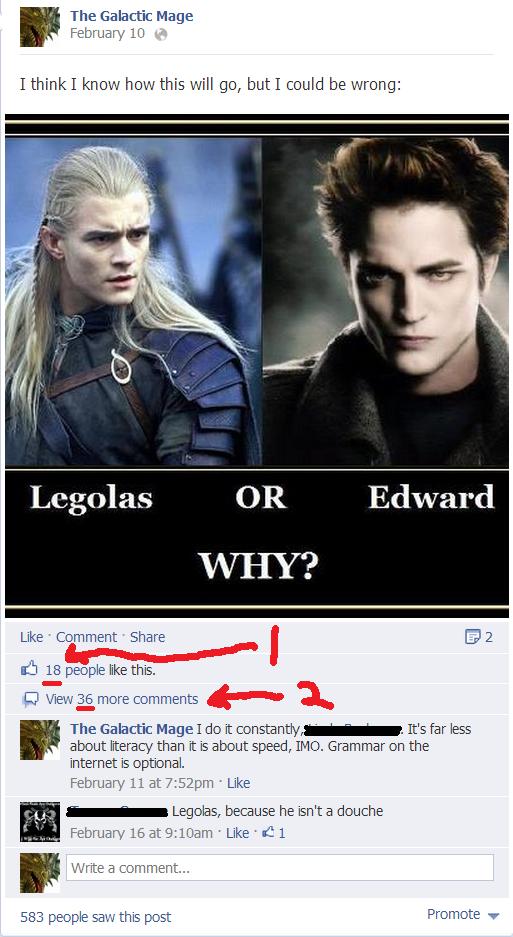
The “why?” was the secret weapon there. So ask questions that are fun and relate to your particular genre. If you can’t think of any, do the “like” thing I mentioned first. There’s nothing wrong with that, as long as you don’t go overboard with it as a device because it can get obvious if you do the same thing over and over. Whatever you do, just make sure you post stuff that your page fans really enjoy and can be involved in. I can’t tell you what that is, because everyone has a slightly different audience, and you are supposed to be the creative one. So do your job: entertain them. Maybe I’ll do another post on that sort of thing some day if anyone actually makes it through this and asks, but for the most part, again, golden rule. If private you would think something is lame and douchey, then don’t do it to other people, especially people you want to do you the favor of buying your book. What would you want to see? Post that.
And as a little aside, don’t be too proud to share really great content from other pages. If some other page posts something really cool, share it. Your fans will be happy to have you serve as the curator of relevant content almost as much as they will enjoy your original stuff. Plus, sharing doesn’t require that you DO anything. So if you, as a page, have liked another page, share away. (If the page has a raunchy name or whatever, I noticed Facebook has added a “remove” option to take off the reference to them.)
For an example of someone who does content really well, check out George Takei’s page (he was Sulu in Star Trek). He’s engaging and fun, and I bet when he jams in a link about buying his book, he gets a little rush of sales every time.
Paid Advertising
While there are more than two kinds of ads on Facebook, for the purpose of this article, I’m going to say that there are two that you can start out with. There are regular ads, that I will call “paid ads” and there are “promoted posts” which is what I will call them.
PAID ADS
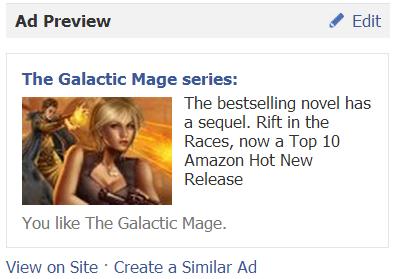 Paid ads are the ads that show up on the side of Facebook users’ news feeds. They look something like what you see on the right, and they have very specific sizes for graphics and word counts:
Paid ads are the ads that show up on the side of Facebook users’ news feeds. They look something like what you see on the right, and they have very specific sizes for graphics and word counts:
Headline: 25 characters
Body text: 90 characters
Image size: 100×72 pixels
Your paid advertising is mostly about that step 1 discovery thing on the sales funnel list. Use it to yell out to the universe—the highly qualified and carefully selected (covered below) universe—that you have something they should know or might be interested in. These ads will help you get likes/fans for your page, and they will help you get only qualified prospects.
Facebook ads are the most incredible thing about Facebook.
This is where all that long reading you had to do above, all that stuff about qualified prospects, pays off because Facebook will hand those qualified prospective customers over to you on a silver platter. Well, for a fee, but it’s a really small fee compared to how tightly you can target your ads and the potential for audience building that lies within.
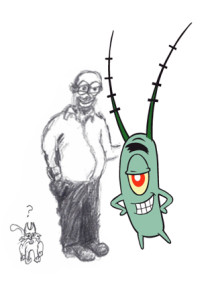 Do you realize that Facebook will give you—even if you are like me and but a tiny plankton in the ocean of books and publishing—access to demographics that ten years ago and going back into the dawn of big advertising, only the biggest, most brutally wealthy companies had access to? Actually, that’s not true. Thirty or so years ago, this information didn’t even exist in this degree of detail at all. Nobody had it. Big companies could buy information from credit card companies, from mailing list subscriptions (like snail mail lists … like find out who subscribes to Cosmo or Sports Illustrated or Car & Driver, etc.). Much farther back than that, it’s not even close how amazing this is. And yet, here you are, my fellow plankton, and we can buy for as little as $50 access to marketing lists that track customer behavior on a level far beyond what mega corps 50 years ago had even dreamed of.
Do you realize that Facebook will give you—even if you are like me and but a tiny plankton in the ocean of books and publishing—access to demographics that ten years ago and going back into the dawn of big advertising, only the biggest, most brutally wealthy companies had access to? Actually, that’s not true. Thirty or so years ago, this information didn’t even exist in this degree of detail at all. Nobody had it. Big companies could buy information from credit card companies, from mailing list subscriptions (like snail mail lists … like find out who subscribes to Cosmo or Sports Illustrated or Car & Driver, etc.). Much farther back than that, it’s not even close how amazing this is. And yet, here you are, my fellow plankton, and we can buy for as little as $50 access to marketing lists that track customer behavior on a level far beyond what mega corps 50 years ago had even dreamed of.
People talk about how this explosion of Kindle ebooks is a gold rush for indie writers, but what they should be shouting about with at least equal volume is that there are tools available for indies that put them on a much more level playing field as marketers and business people, a level that gives them at least a shot against the big guys … at least for now. I see MY book ads in the same spot as I see the big-name authors’ books. For this moment in time, I can shout as loud as the big companies, the rich people, the powerful in literature … at least in a way. That’s HUGE. This truly is an incredible moment in history, and, frankly, I don’t think it will last for long. Big money tends not to allow this sort of thing to go on. It’s bad for business. But, I digress. Just, jump on it sooner rather than later is all I’m saying, because there ain’t no promises for how long you’ll have this kind of access.
As far as details go on how to make ads, there are lots and lots of places to learn how to target your Facebook ad, the easiest of which is Facebook help. There are others as well. Here’s a link to the Facebook help page with tons of helpful videos, and below is kind of a rough looking video on how to do it, but the guy really hit all the right stuff and did it quickly. There’s been a couple of minor changes since he made it, but nothing you can’t figure out. If you want longer videos with lots of preaching and people selling their marketing ebooks, just go search. You can learn a lot from the endless marketing drivel people too. I do (I’ll link some great resources at the bottom). They just want your email address so they can spam the crap out of you. But if you approach it right, you can get your pound of flesh too. All that said, you can skip a lot of that with this video. Despite its low-tech feel, if you haven’t done an ad yet and are jittery or fear complexity, it really does cut right to the point.
PROMOTED POSTS
Promoted posts are the other type of Facebook ad I’m going to touch on. The main difference is that promoted posts are more about step 2 and step 3 on the sales funnel progression, where paid ads are mostly step 1.
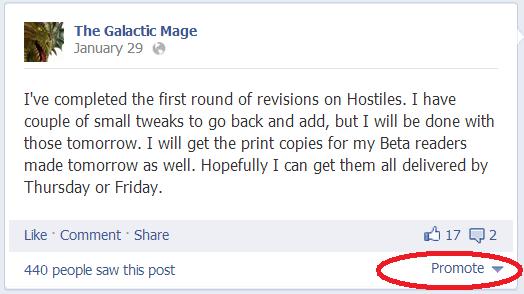
Promoted posts can be targeted to your page fans, which is a really easy and cheap way to ramp up that 17% thing we were talking about up top. For seriously almost nothing—it’s like 10 bucks to hit 2k people—you can get way over that 17%. I’ve gotten really close to getting all my fans to see a promoted post. There are some variables, engagement on it still matters (good content), but, for a few bucks, you can massively increase that 17% edgerank-factored view rate. The better the post, the better the engagement. The better your engagement on your other posts, even better still. And it can be anything: text post, picture, video, whatever. This is the sweet tool for moving people who are at step 2 in your sales funnel to step 3. It’s a place to address issues with step 4 as well, “big discount price this week,” which can move them right into step 5, where they buy. It’s huge. And I can’t stress enough how cheap it is. It’s nothing like paid ads, which do have a learning curve to get as cheap as possible (see the last section below for some help with that).
Think about it, for ten or fifteen bucks you can tell 2,000 people, qualified prospects, who like what you do, that you have a book going on sale next week or a free select run or whatever you are doing. They WILL see it, or most will, because they are fans. They chose to like your page. They like your genre. They’ve been amused by your funny or interesting content for the last x-number of weeks. And now your book that they’ve been hearing about and anticipating is going on sale. Or its sequel is out. Whatever. I sure hope you can see how amazing that is.
For ten bucks you can COMMUNICATE with thousands of qualified prospects.
Dude!
Reports and Tweaking
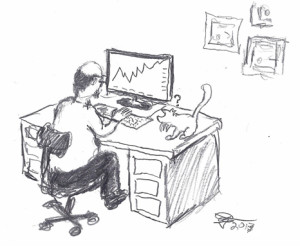 I mentioned above that there is a learning curve, especially for the paid advertising thing. There is. You have to make a few ads and watch which ones do well and which ones bomb. But this is the advantage of Facebook ads: they have great reporting. So, you can see with regular updates what is working.
I mentioned above that there is a learning curve, especially for the paid advertising thing. There is. You have to make a few ads and watch which ones do well and which ones bomb. But this is the advantage of Facebook ads: they have great reporting. So, you can see with regular updates what is working.
Below is a screen shot of my ad in progress at the time I started writing this. You’ll need to click on it to enlarge enough to see it. I got around 40 cents a click, which would make awesome marketers like Brian Carter (links for him below) probably want to kill themselves, but I was happy for it given my kind of obscure audience etc. Just look to get an idea of how much there is to learn and help you tweak. You can see the kind of reach I got for $140 bucks, and you can see that some of my ads are super sucky, just like some of yours will be. It’s fine. If you really look, you’ll see some of the sucky ads for access had really high click through percentages. So there’s stuff to learn. Keep testing.
(Click to enlarge image)
You don’t have to stick with sucky ads, and you don’t have to spend a fortune. Use the Facebook tools to learn and tweak. You can set a budget for a flat rate rather than daily like you see in that image there—when I first started, I went with $50 flat rate. But with confidence built up, I’m now way, way over that in release months. But even for that flat $50, you can make several ads, get some good qualified prospects and learn a ton.
For each $50 campaign (a “campaign” is a cluster of ads within your 50 dollar budget), making four to eight ads in each is a good way to learn. You can start with just one campaign. Make 2 different images, write two headlines, and two or three body texts for your ads, and you shuffle them around. Target two major demographic choices (watch the video I linked in the section above), and make them as closely tuned to the precise thing you do. Be picky. I think groups that end up having around 50,000 to 70,000 work out best. If your tight targeting gets you only 8,000 or 12,000 people in the pool, you can stack a few similar, tightly similar, demographics together. So set up some demographic groups, pick two, put your texts and images together and then watch what happens. If you are like me, you’ll see one or two of your ideas do well or at least okay, and the rest just suck beyond comprehension. So take the ones that work, and tweak them in a new campaign, dump the rest. Just change ONE thing in each change, and see if you can’t find some combination that gets the best results for the lowest cost (CPM or CPC). Pick a new target audience, try again. Swap a picture out but leave the rest alone and try again with an audience that you did okay with. Try stuff. Don’t expect a home run on your first swing. Think like a business person figuring out a market, not a desperate artist hoping to win the Facebook lottery the first time you play.
And remember, even the people who don’t click your ad and like your page are still seeing your ads on their Facebook sidebar … and because you are targeting carefully with the awesome demographic machine that Facebook gives us, the people seeing it are all in the group of carefully targeted people we know as qualified prospects, even if they don’t click. So your worst case scenario, even with bombed ads, is that people who like your genre based on your careful targeting are seeing your book name and images. It’s almost like a free billboard on Facebook that only qualified prospects can see because you don’t pay for people who don’t click. That’s not bad for a worst case scenario.
Getting ad clicks and getting them cheap takes time to get decent at doing, and I’m still learning too. The really good marketing guys (I’ll link some below you can go learn from, people who are way better than me that can get down to like 5 and 9 cents a click, though they tend to sell marketing rather than real stuff like books or widgets or whatever, so it’s kind of self-serving and spammy tasting if you drink too much of their kool aid … ) do way better than I do, and getting 5 or even 10 cents a click is awesome. Me, I’m stoked if I can get under 30 cents a click, which a good “real” company marketer would have an aneurysm if they saw. But I have faith in my sales funnel, and since, at least so far, the long term plan I set in place in 2011 before my first book even came out in January 2012 is working just like I mapped it out, I feel pretty good about it. I’ve had some ads get down to 17 cents a click. Most not. Sometimes I end up as high as 65 cents or so a click. But you know what, my sales more than cover it so, even if I don’t have a hot-shot marketer percentage, I have profit … and sales. Best seller list stuff. So, I am not going to complain. It wasn’t all Facebook, but Facebook was a huge part of the launches. Facebook works. But you have to use it right.
Conclusion
None of this is an end run on making good stories, taking the time to revise and edit and proofread, and get proofreaders, until the manuscript is as good as you can possibly get it. You still have to have a good cover art. It still has to be amazing, even more than amazing given the competition out there. It has to be a good book. And I really I hate to make that sound like a throw away comment either, the sort of throw away treatment that so many marketing conversations give to “genuine engagement” with Facebook and communication that is real. I’m dead serious: if your book isn’t polished or your story isn’t worked out well enough, none of this will work. The whole point of Facebook is to help you launch a story, to get the word of mouth thing going, and grow the fan base from there. If there isn’t a story worth talking about, people won’t talk about it. So make sure you do the work and put in the time to make your story as absolutely perfect as you can possibly get it. Facebook can get the word out for you, but it isn’t lipstick for your pig.
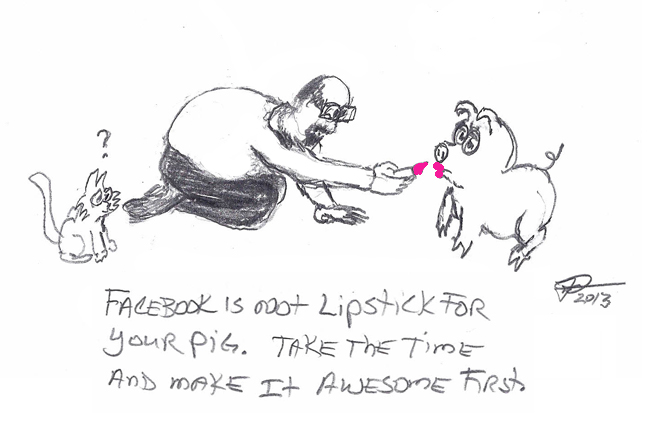
I’ll also add that I’m not crediting Facebook for all my good fortunes at all. Frankly, I give my cover artist, Cris Ortega, the major credit for the great launch. The cover rocks, and I think the investment paid huge dividends in that regard. Also, I had a modestly established writing presence online as a satirist and humor writer, so all of that contributed a lot as well. But when I put my first book out, I had 49 fans on Facebook and had never published a book in my life. I got to about 990 page fans over the course of the five or six months that followed release, carefully targeted, qualified prospects, not just every like I could get to impress my friends. My second book came out and I did the exact same strategy on Facebook and got 1,200 new fans in only a month for the same cost, about $700. But this time my book hit number 1 in the hot new releases list almost immediately, right there with a lot of really amazing writers who have been at this way longer and who have traditional publishing to help them get the word out with way more money for marketing.
Even saying all that, who knows if I can do it again for the next one? I sure don’t. But here’s what I do know: it’s a rare time for writers, and there are rare tools available that might be taken away by the rich and powerful establishment at any moment. The little guy NEVER gets to have this kind of access for long. History proves it time and time again. So use it. Just manage your expectations while you do. Be willing to screw it up and tweak your ads, have a long term mindset, and don’t be a spammy douche bag. If you are writing good books, the funnel is your friend. You just have to use it well and patiently. Good luck, and don’t be shy about emailing me if you have questions, or just ask in comments so everyone can see me flounder and fumble with stuff I probably won’t know.
Great Resources
Some of these guys are a little more spammy than others, but you can learn a lot from them. Go ahead and sign up for their emails and let them send you their endless webinar invites. Keep an eye on the subjects and go watch the ones that you think will help you. Yes, they will ask you to buy something at the end. So don’t buy it. They get you all excited, so don’t buy. At least not while you are still logged into the webinar. If you are still excited about it tomorrow, go buy it. That said, the first link, Brian Carter, this guy isn’t a spammer. I’ve learned so, so much from his stuff. Yeah, he’s a marketer, but he’s not one of the evil ones. He’s just sharp guy who figured it out. He likes to figure this stuff out like you like to write. So, follow his blog. He’ll keep you up to date on changes even after this long-ass post starts to age past usefulness. HubSpot is another one that’s pretty solid. They will pimp themselves more, but they do have good stuff. The Heyo guys, well, they’re nuts, but they’re sharp and they stay up on stuff, so, you know, every four to six months, check in with them and the rest of these guys so you don’t fall too far behind. You’d be surprised what you can do just putting in five to fifteen hours every quarter to half year. These guys do all the hard work; you just have to check in and get caught up. I’ll add links as I find them, so check back from time to time to see what new sources I might have found.
Brian Carter (you can learn a TON here): http://briancarteryeah.com/blog/posts/
Here’s his new 37 tips for Facebook, a free ebook: http://briancarteryeah.com/blog/social-media-roi/free-ebook-37-tips-everyone-needs-for-facebook-advertising/
HubSpot , general resource (sign up and they’ll send you free ebooks and webinar invites all the time): http://www.hubspot.com/
HubSpot, ad creation help (it’s a download): http://go.hubspot.com/how-to-create-killer-facebook-ads-download/
Heyo (they will teach you a lot in their endless webinars, but they always try to sell you. They’re young, they’ll probably get less spammy as they get older. They are sharp though): https://heyo.com/#web
Mashable, this is their social media general page. You can always find up-to-date stuff on here to stay current on changes and new strategies: http://mashable.com/social-media/
Cool site with Facebook Graphic Sizes on it: http://www.lunametrics.com/blog/2012/11/12/final-social-media-sizing-cheat-sheet/

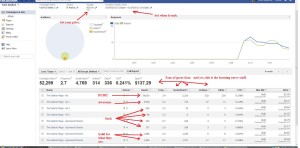
Informative and witty! Thank you.
You’re welcome. Glad to be of some use and amusement.
Hi John,
I’m not sure if you’re still keeping up with this post (by the way, holy crap that was long), but I’m going to take a shot anyways.
When you are running these ads, are you linking the ads back to your facebook page, or linking directly to your website where you have a newsletter signup page? I read somewhere that before FB changed to the the timeline layout, you could feed links directly to a specific “tab”, where as now you can’t.
So is the idea to advertise to a FB user, get them to click the link (hence, they’re active), get them to your page, and then hope they find the signup form?
Hi August, and yeah, this post is a big monster of a thing. I got carpal tunnel just trying to scroll down to where your comment is. lol
Okay, so about adds. You can experiment with what works best for your business model. But I usually send them to my Facebook page. I’ve got a nice big banner with great stuff from my amazing cover artist and hopefully my last post or two wasn’t too lame or beer induced, and they’ll at least see the potential for intersted sci-fi and fantasy stuff. If they are into that, they’ll “like” and I’ll have a chance to amuse them over time and prompt them towards my blog, my mailing list and my books. It requires patience, but rather than going for the one shot sale and rolling the dice on whether it works, I think you go for long term relationships. As they see your posts, and maybe eventually check out your blog and sign up for the RSS feed on that … they read those too and get to know you, hopefully the like the stuff you do and are into, and then when you post on FB or in your blog (you’ll do both), and you say “my book is on sale” or “sign up for my newsletter” they’ll be more inclined to invest in you.
However, again, you can test things. If you have a really sweet landing page on your site that you think can convert them straight to a sale, go for it. The thing to remember is you can set a budget for campaigns, and experiment, so if you really believe in your landing page, maybe risk $50 to see. If nothing else you’ll learn something.The risk is that if they don’t buy, you lost them forever, or until you pay for another shot at convincing them you, your brand, is worth a try.
The problem I see with trying to get them from and ad to a mailing list is this: Why should they? With just an ad, if you are not already a known entity for them, then you’re sort of saying, “Hey, I know you don’t know me, but give me your email address.” I’m sure other marketers will disagree, and, in the end, marketing is all just guessing and drinking anyway, so take all of this with a grain of salt.
Also, about the tab thing, go check out Heyo.com. You can still do lots of stuff with tabs. (I’d do more with them… I should, I pay every month lol … but I’ve been in hardcore writing mode this year, which, in the end, is the best form of marketing I think. Put another one out.)
Anyway, there you go, an answer almost as long as the original post. Hope it helps.
Thank you, John. This post is so amazing. Thanks for taking the time to help us out. I’ve got 2 techno-thrillers out, a webpage, and will definitely be adding a mailing list soon.
I am trying to decide if I should create a Facebook profile page where I can Friend people or if I should do an author page where people can Like me. I’m not worried about personal life clashing with professional because I wouldn’t post family photos, etc., on a profile page anyway. Any opinion on this?
Well, Emerson, it really comes down to how much time you have for either. I think the upside of a page is that you can use it for branding purposes and really stick tight to your fanbase, people who are way into techno-thrillers, and nobody else. Having a profile is fine, and people can actually “follow” that, but I don’t believe you have access to the full range of advertising tools for a profile (like Power Editor in particular, which I don’t cover in this article). You can make your page author focused rather than book focused if you’d like. Or you can do both. Heck, all three. BUT, in the end, you are better off doing ONE thing really well, than three things half-assed. So, think about how much time you have. Not just now, when you’re kind of excited to get it going and its all interesting, but six months from now when making graphics is time consuming and ideas are hard to come by, plus you got another book coming out, your editor has a stack of revisions for you, and your dog has to go to the vet because the cat scratched him and his eye is all puffy again. Just saying. lol.